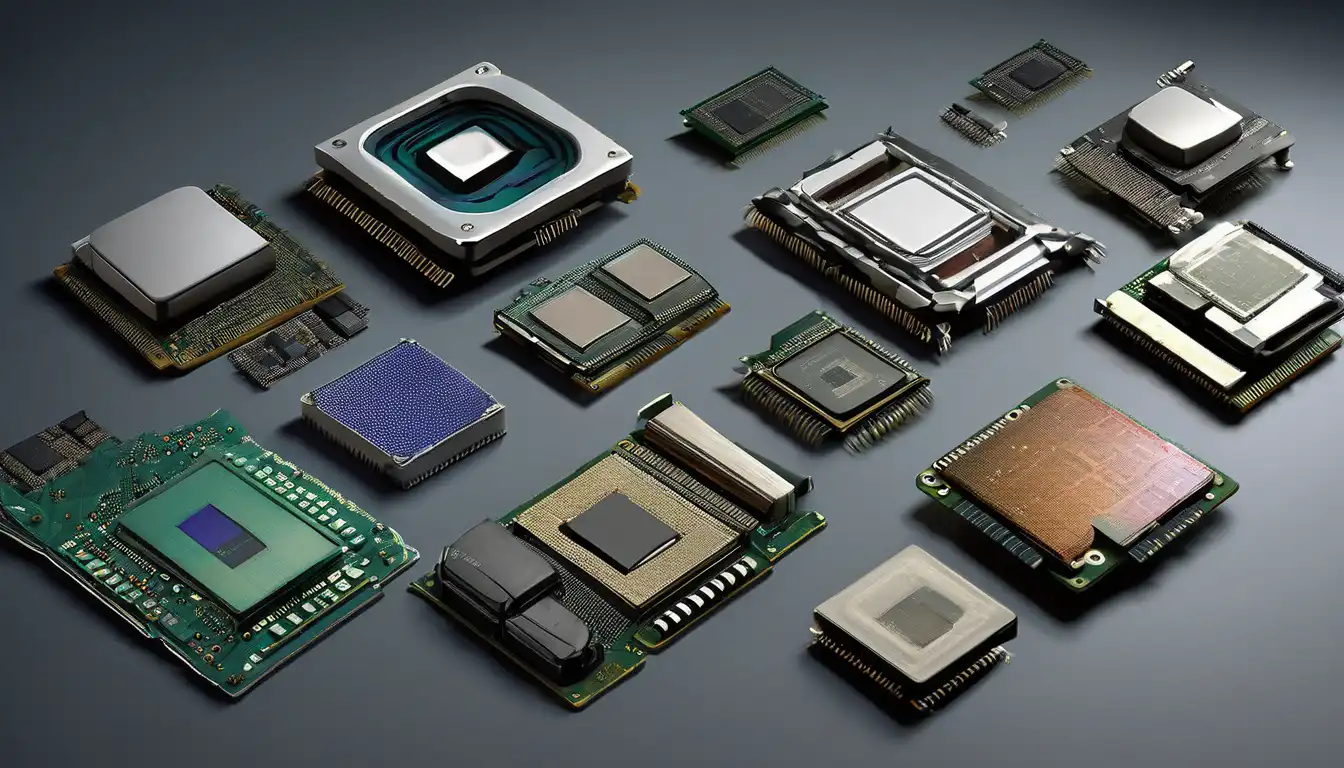The Dawn of Computing: Early Processor Technologies
The evolution of computer processors represents one of the most remarkable technological journeys in human history. Beginning with primitive vacuum tube systems in the 1940s, processors have undergone revolutionary changes that have fundamentally transformed how we live, work, and communicate. The first electronic computers, such as ENIAC, utilized thousands of vacuum tubes that consumed enormous amounts of power and required constant maintenance. These early processors operated at speeds measured in kilohertz, a far cry from today's gigahertz processors.
The Transistor Revolution
The invention of the transistor in 1947 marked a pivotal moment in processor evolution. Developed at Bell Labs by John Bardeen, Walter Brattain, and William Shockley, transistors replaced bulky vacuum tubes with smaller, more reliable semiconductor devices. This breakthrough enabled computers to become smaller, more efficient, and more affordable. The transition from vacuum tubes to transistors in the 1950s laid the foundation for modern computing and set the stage for further miniaturization.
The Integrated Circuit Era
The 1960s witnessed another quantum leap with the development of integrated circuits (ICs). Jack Kilby at Texas Instruments and Robert Noyce at Fairchild Semiconductor independently developed the first practical integrated circuits, which combined multiple transistors on a single silicon chip. This innovation dramatically reduced the size and cost of processors while improving reliability. The early integrated circuits contained only a few transistors, but they paved the way for the microprocessor revolution that would follow.
The Birth of the Microprocessor
In 1971, Intel introduced the 4004, the world's first commercially available microprocessor. This 4-bit processor contained 2,300 transistors and operated at 740 kHz. While primitive by today's standards, the 4004 demonstrated the potential of putting an entire central processing unit on a single chip. This breakthrough made personal computing possible and marked the beginning of the microprocessor era that continues to this day.
The Personal Computer Revolution
The late 1970s and 1980s saw the rise of personal computers powered by increasingly sophisticated processors. Intel's 8086 and 8088 processors, introduced in 1978 and 1979 respectively, became the foundation for IBM's PC architecture. These 16-bit processors represented a significant advancement over earlier 8-bit designs and established the x86 architecture that would dominate personal computing for decades. The competition between Intel, AMD, and other manufacturers drove rapid innovation and performance improvements.
The RISC Architecture Challenge
During the 1980s, Reduced Instruction Set Computing (RISC) architecture emerged as an alternative to the complex instruction set computing (CISC) approach used by Intel and other x86 manufacturers. RISC processors, championed by companies like Sun Microsystems and IBM, used simpler instructions that could be executed more quickly. While RISC never achieved the commercial success of x86 in the personal computer market, it found important applications in workstations, servers, and embedded systems.
The Performance Race: 1990s to Early 2000s
The 1990s witnessed an intense competition between processor manufacturers, often referred to as the "megahertz wars." Intel's Pentium processors competed against AMD's K6 and Athlon series, driving clock speeds from tens of megahertz to multiple gigahertz. This period saw several key innovations:
- Superscalar architecture: Processors that could execute multiple instructions per clock cycle
- Out-of-order execution: Improved efficiency by executing instructions as their operands became available
- SIMD extensions: Specialized instructions for multimedia processing
- Cache memory integration: On-chip memory to reduce latency
The Multi-Core Revolution
By the mid-2000s, processor manufacturers faced physical limitations that made further clock speed increases impractical due to power consumption and heat generation. The industry responded by shifting to multi-core architectures, where multiple processor cores were integrated on a single chip. This approach allowed for continued performance improvements while managing power efficiency. Today's processors commonly feature 4, 8, or even more cores, enabling parallel processing for improved multitasking and performance.
Modern Processor Technologies
Contemporary processors incorporate numerous advanced technologies that optimize performance, power efficiency, and specialized capabilities. Key developments include:
- Heterogeneous computing: Combining different types of cores for optimal performance and efficiency
- Advanced manufacturing processes: Shrinking transistor sizes to 7nm, 5nm, and beyond
- AI acceleration: Specialized hardware for machine learning workloads
- Integrated graphics: Combining CPU and GPU functionality on a single chip
- Security features: Hardware-level protection against various threats
The Mobile Processor Revolution
The rise of smartphones and tablets has driven innovation in mobile processors, which prioritize power efficiency and integration. Companies like Apple, Qualcomm, and Samsung have developed sophisticated system-on-chip (SoC) designs that combine CPU, GPU, memory, and various controllers on a single piece of silicon. These processors have enabled the mobile computing revolution and continue to push the boundaries of what's possible in portable devices.
Future Directions in Processor Technology
As we look to the future, several emerging technologies promise to continue the evolution of computer processors. Quantum computing represents a fundamentally different approach to processing information, potentially solving problems that are intractable for classical computers. Neuromorphic computing, inspired by the human brain, offers new architectures for artificial intelligence applications. Other promising directions include photonic computing, which uses light instead of electricity, and three-dimensional chip stacking for improved density and performance.
Sustainability and Efficiency
Future processor development will increasingly focus on sustainability and energy efficiency. As computing becomes more pervasive, reducing the environmental impact of processors through improved power management, recyclable materials, and longer product lifecycles will become increasingly important. Manufacturers are also exploring alternative materials beyond silicon to overcome physical limitations and continue the pace of innovation.
The evolution of computer processors has been a story of continuous innovation, driven by the relentless pursuit of better performance, efficiency, and capabilities. From the room-sized computers of the 1940s to the powerful processors in today's smartphones, this journey has transformed our world in ways that were unimaginable just a few decades ago. As we stand on the brink of new computing paradigms, the future of processor technology promises to be just as exciting as its past.
